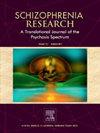Efficacy and tolerability of blonanserin in schizophrenia: A systematic review and meta-analysis of randomized controlled trials
IF 3.6
2区 医学
Q1 PSYCHIATRY
引用次数: 0
Abstract
Background
Blonanserin is approved for treating schizophrenia in Japan, South Korea, India, and China. We aimed to synthesize the efficacy and tolerability of blonanserin compared to other antipsychotics.
Methods
A systematic review and pairwise meta-analysis were conducted using the Cochrane Schizophrenia Group's study-based trial register until January 24, 2024. We included open and blinded randomized controlled trials (RCTs) involving schizophrenia patients, with studies lasting at least 3 weeks. Primary outcomes focused on overall schizophrenia symptoms using rating scales and relapse rates. Secondary outcomes included symptom subtypes, treatment response, dropout rates, quality of life, and side effects, analyzed using standardized mean difference (SMD), mean difference (MD), and risk ratio (RR) with 95 % confidence intervals (CIs). The review protocol was published in Open Science Framework (https://osf.io/e7jfa/).
Results
Fourteen acute-phase studies with 2697 participants compared blonanserin to olanzapine, haloperidol, risperidone, paliperidone, aripiprazole, amisulpride, and placebo. Blonanserin showed greater efficacy than placebo (SMD = −0.47, 95 % CI: −0.66 to −0.27) and similar efficacy to other antipsychotics in reducing schizophrenia overall symptoms. No data on the number of participants who experienced relapse with blonanserin was available in the single maintenance-phase study. There were also no clear differences between antipsychotics in most secondary efficacy outcomes, but blonanserin produced less prolactin and weight increase but more akathisia and tremor than risperidone, and less prolactin increase, anticholinergic and extrapyramidal side-effects than haloperidol.
Conclusion
Our study suggests that differences in efficacy between blonanserin and other antipsychotics are small and that blonanserin has a different tolerability profile than haloperidol and risperidone.
布洛南色林治疗精神分裂症的疗效和耐受性:随机对照试验的系统回顾和荟萃分析
背景布南色林在日本、韩国、印度和中国被批准用于治疗精神分裂症。我们的目的是综合分析布洛南色林与其他抗精神病药物相比的疗效和耐受性。方法我们利用科克伦精神分裂症小组的研究型试验注册表进行了系统综述和配对荟萃分析,该注册表的有效期截至 2024 年 1 月 24 日。我们纳入了涉及精神分裂症患者的开放性和盲法随机对照试验(RCT),研究持续时间至少为 3 周。主要研究结果侧重于使用评分量表的总体精神分裂症症状和复发率。次要结果包括症状亚型、治疗反应、辍药率、生活质量和副作用,采用标准化平均差(SMD)、平均差(MD)和风险比(RR)以及 95% 置信区间(CI)进行分析。综述方案发表在《开放科学框架》(https://osf.io/e7jfa/)上。结果14项急性期研究共2697名参与者将布洛南色林与奥氮平、氟哌啶醇、利培酮、帕利哌酮、阿立哌唑、阿米舒必利和安慰剂进行了比较。在减少精神分裂症总体症状方面,布洛南色林的疗效高于安慰剂(SMD = -0.47,95 % CI:-0.66 至 -0.27),与其他抗精神病药物的疗效相似。在单项维持阶段研究中,没有关于布洛南色林复发人数的数据。在大多数次要疗效结果中,抗精神病药物之间也没有明显的差异,但与利培酮相比,布洛南色林产生的泌乳素和体重增加较少,但产生的无运动和震颤较多,与氟哌啶醇相比,产生的泌乳素增加、抗胆碱能和锥体外系副作用较少。
本文章由计算机程序翻译,如有差异,请以英文原文为准。
求助全文
约1分钟内获得全文
求助全文
来源期刊

Schizophrenia Research
医学-精神病学
CiteScore
7.50
自引率
8.90%
发文量
429
审稿时长
10.2 weeks
期刊介绍:
As official journal of the Schizophrenia International Research Society (SIRS) Schizophrenia Research is THE journal of choice for international researchers and clinicians to share their work with the global schizophrenia research community. More than 6000 institutes have online or print (or both) access to this journal - the largest specialist journal in the field, with the largest readership!
Schizophrenia Research''s time to first decision is as fast as 6 weeks and its publishing speed is as fast as 4 weeks until online publication (corrected proof/Article in Press) after acceptance and 14 weeks from acceptance until publication in a printed issue.
The journal publishes novel papers that really contribute to understanding the biology and treatment of schizophrenic disorders; Schizophrenia Research brings together biological, clinical and psychological research in order to stimulate the synthesis of findings from all disciplines involved in improving patient outcomes in schizophrenia.
 求助内容:
求助内容: 应助结果提醒方式:
应助结果提醒方式:


